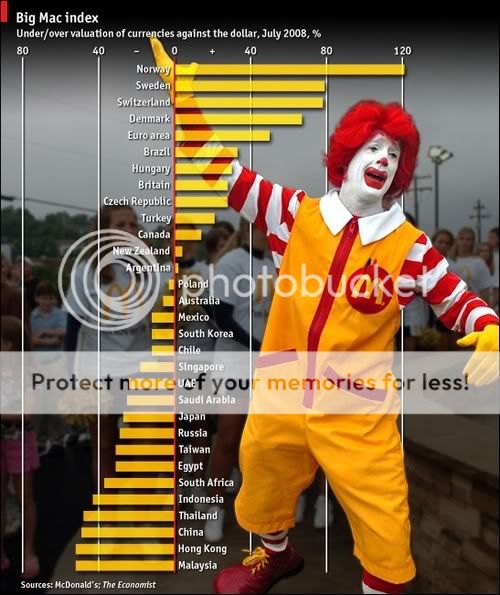Economic Update (9.1.2009)
By Randell Tiongson on September 1st, 2009
Economic Update (9.1.2009)
Philippines averts recession with better than expected 2Q09 GDP
- The Philippine economy grew better than market expectations in the 2Q09.
- COMMENT: GDP rebounded from a -2.1% contraction in the 1Q09 with a +2.4% growth on a seasonally adjusted basis.
- The country has officially escaped a recession, helped by government pump-priming and steady remittances
- The actual results were better than street expectations of +0.3% Yoy and +1.3% QoQ.
- Philippine 2Q09 GDP grew 1.5% Yoy and +2.4% over 1Q09.
- On the demand side, the country’s resilient performance was driven by government spending which increased 9.1% Y/Y.
- This was driven by aggressive pump-priming activities in the 2Q09.
- Investments in construction expanded by 11.7 percent from 1.0 percent in 2008.
- Public Construction rebounded magnificently with 29.9 percent growth from negative 5.6 percent in the previous year.
- By industrial origin, the INDUSTRY sector carried growth in the 2Q09 with a seasonal +4.5% growth.
- This was bolstered by the strong performances of Mining & Quarrying and Construction.
- According to the NSCB, per capita GDP declined by 0.5 percent from 2.1 percent in the previous year.
- Per capita PCE also slowed down to 0.3 percent from 2.1 percent.
- At current prices, the per capita GNP now stands at P44,828 or US$937 for the first semester.
Philippines can achieve +1.8% growth for 2009; Look at election themes
- With the actual 2Q09 results, the Philippines is now on track to meet upper end of the govt’s.target range for FY2009 which is +1.8% growth.
- With GDP growing by +1% in the 1st semester, the Philippines needs to expand 2.6% in the 2H09 to reach +1.8% full year growth.
- THis figure is highly achevable according to NEDA officials.
- Aside from improving global prospects, stronger domestic consumption and election spending will prop up the economy in 2H09.
- The official target growth range for the year is +0.8% to +1.8%.
Burgernomics
By Randell Tiongson on August 22nd, 2009
Ever heard the term ‘Burgernomics’? Believe it or not, there’s actually such a term and it’s widely used by economists/investors.
The publication The Economist actually publishes an index that makes reference to the Big Mac PPP. Err, the Big Mac what? PPP is short for Purchase Power Parity. PPP is a theory that states that currencies adjust according to changes in their purchasing power. It is actually survey done by The Economist that determines what a country’s exchange rate would have to be for a Big Mac in that country to cost the same as it does in the United States. They use the price of the Big Macs in different countries and divide it by the price of a Big Mac in the US. Let’s say that the price of a Big Mac in the Philippines is P100 and the price of a Big Mac in the US is US $ 3 — you simple divide the Philippine Big Mac cost by the US Big Mac cost, or 100 divided by 3. In this case, according to the Big Mac PPP, the exchange rate of the Philippine Peso against the US Dollars should be only P33.33: US$1, making our Peso undervalued.
Sometimes, Burgernomics makes some sense to me… but most of the time it just makes me hungry.

Recession anyone? (part 1)
By Randell Tiongson on August 9th, 2009
We often hear the word ‘recession’ lately which prompted me to blog about it. Why is it that people fear recession too much? Is recession as bad as how we perceive it to be?
Let’s define recession. Recession may be deemed as significant decline in activity across the economy, lasting longer than a few months. It is visible in industrial production, employment, real income and wholesale-retail trade. The technical indicator of a recession is two consecutive quarters of negative economic growth as measured by a country’s gross domestic product (GDP). When there is a severe or prolonged recession, it is referred to as an economic depression. Recessions also comes in different shapes – V, U, L and W. When the economic contraction is quick and followed by a rapid and sustained recovery, economists refer to it as a V shape recession. If there is a prolonged slump in the economy, it is informally termed as a U shape. A much longer decline, like 8+ quarters can be called an L shaped recession. Finally a W shaped recession is a term used when there is a double dip recession.
Nosebleed!
I like to look at the economy as a motor car engine. Any engine, no matter how efficient and durable it is, can’t run at full throttle for an indefinite period. Imagine driving your car at maximum speed continuously for days… at one point your engine will give in and break down. The economy is like that as well. When the economy is in constant growth, it will overheat and it will breakdown. Economic growth brings growth in disposable income; additional disposable income will allow people to increase consumption; increased consumption will drive up prices; increase in prices will result to inflation and so on and so forth. A state of balance is needed, or in economics terms, equilibrium. However, equilibrium can only exists in theory and there will never be an absolute equilibrium. When the car slows down, that’s like the economy going into recession.
The economy goes on cycles, recession is part of a cycle. Since recession is part of a cycle, we should not be in despair as it will come to pass … “We are hard pressed on every side, but not crushed; perplexed, but not in despair; persecuted, but not abandoned; struck down, but not destroyed.” (2 Corinthians 4:8-9, NIV)
Catch part 2, soon!




